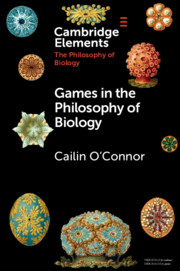Element contents
Games in the Philosophy of Biology
Published online by Cambridge University Press: 18 January 2020
Summary
- Type
- Element
- Information
- Online ISBN: 9781108616737Publisher: Cambridge University PressPrint publication: 13 February 2020
Bibliography
- 14
- Cited by

